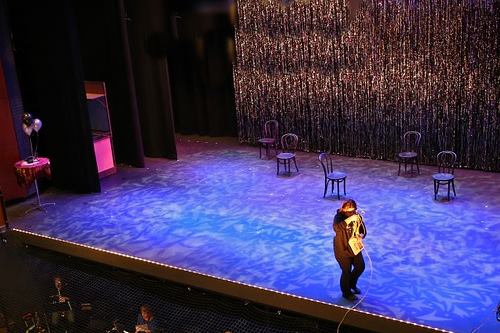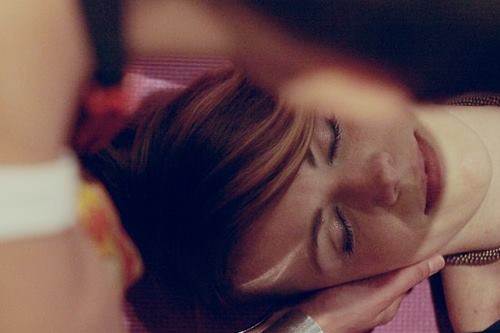Stage Hypnosis Inductions
I got an email today:
I recently purchased the "Best Hypnosis Induction Scripts" package instant download version and I really love it. I've bought a lot of hypnosis scripts from your site. I am a young hypnotist (19 years-old) and this has provided the best of assistance to me so I want to say thank you as I am seriously considering becoming a stage hypnotist and I might just book my first gig at a corporate event party at my company soon despite me being so young.
Getting to the point now... although every single induction is very useful within the hypnosis scripts' package, the Instant and Rapid Inductions are personally the best of service to me because I am going to do hypnosis for stage performing/entertainment and demonstration purposes. Instant Inductions are short, quick, and instant and will work well for me in my field of work.
That leads me to my question: is there, by any chance, a way for you to personally provide me some more instant and rapid induction scripts via email? The ones you provided are great! It's just that I would love to have more in my arsenal as a hypnotist. It would mean the world to me if you could personally develop some for me in the same organized step-by-step format you used in the hypnosis scripts package. You know, with the organized tables that explained what to do when?
I know it sounds like a lot to ask but I am a loyal customer after all and I need help more than ever. My boss could set me up with my first stage hypnosis gig at the company party. It'd really be cool if you could hook me up with some more instant and rapid inductions via email since that seems to be the simple route. Anyway, let me know. Thanks!
Stage Hypnosis Inductions
My reply was:
Good to hear from you. And thank you for those kind words about my scripts.
I am not a stage hypnotist myself, but I have been to many, many stage hypnosis shows.
I can understand why you think you need more inductions, but I think you are looking at the wrong part of a stage show. The key skill in a smooth stage show lies in selecting the right participants. Everyone can be hypnotised. Hypnotic induction is actually fairly simple. So it's not the induction that is critical. What is absolutely, totally crucial is including the top 5% of hypnotisable people in your audience.
Suppose you have a group of 50 people. You would not want more than five people upon stage. Therefore all you have to do is to find the top 10% of the audience and that will give you your five people. Stage shows on Youtube always miss out this part of the show. But it is the most important part.
Stage Hypnosis is entertainment, not science
You need to spend five or 10 minutes warming up your audience before anyone gets to the stage. Then you get the whole audience involved by inviting everyone to close their eyes and imagine a weight on one hand and a balloon on the other hand. Take note of the people whose hands rise and fall. The ones whose hands rise and fall a bit are hypnotised. The ones whose hands are way up and down are faking it. But that's okay. You're not there to demonstrate hypnosis.
Your job is to entertain people. The people who are faking it are all exhibitionists who want people to look at them. They will go along with whatever you suggest as long as they can show off. They want to get up on stage and act silly and do everything else you want. You want to get a mixture of the easily hypnotised and the exhibitionists.
If you end up with too many potential participants, then you need to refine the group. Do another test for hypnotisability. The easiest tests are Magnetic Hands and Hands Stuck To Your Thighs. This is a much stronger test of hypnotisability, especially the Hands Stuck to Your Thighs test. The people who naturally can do this are your ideal participants.
While you are doing the testing you're actually entertaining the audience. They are trying it themselves, and they are also seeing the people around them who are responding. You are setting up the expectation for both the participants and the audience for the rest of the show. Make the selection process one of the funniest parts of your show.
Stage Hypnosis Induction safety on stage
Invite the fakers and the highly susceptible up on stage. Then you do a group induction. Do not do an instant or rapid induction. Your chances of getting an abreaction with an instant induction are very high. No one wants to see someone lying unconscious on the stage thrashing around as if they are in an epileptic fit. That is definitely not good for business. You can expect to get one person in 200 to go into an abreaction. You need to avoid that until you have a lot more experience, and know how to deal with it.
Abreactions is the main reason why there are so few stage hypnotists. Hypnotising people in public is easy. Getting people to do stupid things on stage is easy. Dealing with someone in the grip of a full-on psychological terror is not.
Stage Hypnosis Induction safety for you
After you have done the group induction you will find that some people are actually not in trance and not amongst the exhibitionist group either. Get them off the stage immediately. Also, get rid of the drunks.
Then, turn to the audience at that point, and say something to make sure that anyone in the audience who was also induced snaps out of it. Use a bit of audience participation and get them to poke each other or something like that. Get every to say aloud that they are not in trance. You do not want anyone coincidentally crashing their car on the way home and saying it's your fault.
Keep your Stage Hypnosis inductions simple
My advice is for you to leave out the Standing Inductions and the Handshake Inductions until you have perfected your basic show. All those polished performers that you see in Las Vegas or on that television show have had 15 or 20 years experience before getting to that point.
Good luck with your next show. You can be a star.





